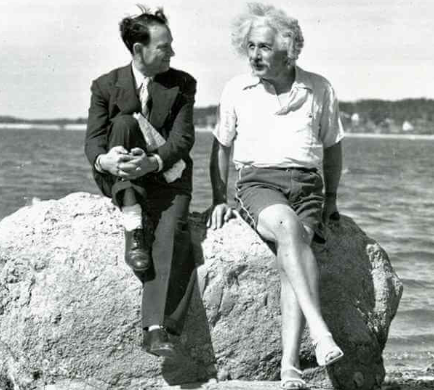Frankenstein vs Einstein
In digital media, we have a huge variety of tools available that enable us to automate basic functions of account management to free up time for optimisation and innovation that would otherwise be spent twiddling the knobs. There are some seriously clever things we can do with tool-assisted optimisation that make us look like mad scientists to our clients and we kind of love that, or at least I do.
I’d rather be Victor Frankenstein over Einstein any day.
Where it all comes unstuck is complacency. Have you ever set up a rule you thought was bulletproof, only to later discover that it had done something totally unintended? Or perhaps it did everything it was intended to do (great!) until you factor in all the other stuff it did, which it wasn’t supposed to (less than great).
Here are some easy-to-parse ideas to consider when building your own robot slave automation rule set.

Automation is only as good as the amount of effort that went into making it.
Suppose you find yourself making the same optimisation decisions based on the same criteria at regular intervals. In that case, you have 2 choices: wait until your job is replaced by robots (or perhaps very intelligent chimps) or train the robots to do your job so you can get around to doing something else important.
Before you do, however, make sure you have a clear idea of what campaign elements are actually being included in your automation. When writing rules, get into the habit of asking yourself the question, “What else could be included in this that I haven’t thought of?”
What about things the rule can’t affect now because they aren’t in the account yet? This is where a consistent naming convention becomes essential, so you can ensure that the rule won’t pick up new campaigns added to the account down the road because it knows to look somewhere else to find what it needs.
Unexpected stuff happens; make sure you know when it does.
Only checking your rules the day after they go live and again a week later is buying yourself a one-way trip down to the river. Whenever I’m working on an account audit for a pitch, and I see automation set up by the incumbent account managers, I’m invariably blown away by the lack of science that goes into them.
All it takes is one stoned sysadmin to accidentally kick a cable out in the client’s server room, and suddenly, your account is driving $12 CPC traffic to a 404 page. Your client will always send you a Christmas card if you always seem to know when their site dies before they do.
There are free online scripts you can apply to your campaigns to ping every Final URL in your account for a valid response, or you can go with a piece of 3rd party kit to ping the site at any regularity you nominate.
Don’t be afraid to start small.
Before making his famous monster, I like to think that Frankenstein made a horde of stitched-together rabbits and kittens as a kind of practice run. After all, in Mary Shelley’s original, the monster was in most regards superior to a regular person; it wasn’t until Boris Karloff came along in 1931 that the iconic image of the lumbering palooka with bolts in his neck became etched into the public’s minds. What, you think Victor just chanced a perfectly function artificial human on his first shot?
Many marketers fall into the trap of trying to create the One Rule to Rule Them All. What they fail to factor in is that the amount of time to create one rule that does x, y, and z is far greater than the time required to make three rules that achieve all three goals independently- to say nothing of the potential for human error.
Some of the best automations you can set up are the simple ones. For example, one rule to pause all “summer” ads on the last day of the season and one to activate all “spring” ads at midnight. Boom! That’s your sophisticated tactical strategy reduced to 2 required actions: pause this, activate that. All it takes is loading your tactical assets early, making sure they have accurate, specific labels and creating thoughtful, exhaustive criteria. On the other hand…
You shouldn’t be afraid to think big, either.
Don’t let the fear of failure deter you from being as clever as possible. Ultimately, the tools were built to help you make your job easier, and it’s up to you to turn your account into Skynet if you so choose.
Of course, the other key takeaway from this whole story is to plough your own damn fields, lest you be drowned by your kalevalic automaton.
Which, to be fair, rolls off the tongue way better.
Written by
Luke Ashmore-Delaney





